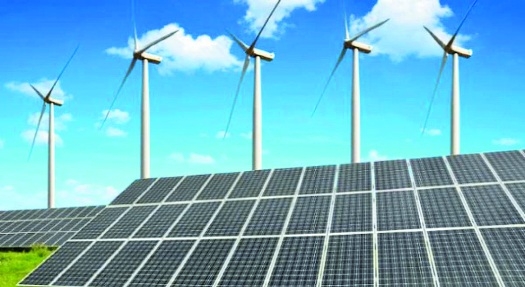India achieves target of 40 per cent power generation capacity from non-fossil fuel
| Date :03-Dec-2021 |

NEW DELHI :
INDIA has achieved the target of 40 per cent of its installed electricity generation capacity being from non-fossil energy sources, an official statement said on Thursday. “At COP 21, as part of its Nationally Determined Contributions (NDCs), India had committed to achieving 40 per cent of its installed electricity capacity from non-fossil energy sources by 2030. “The country has achieved this target in November 2021 itself,” the Ministry of New and Renewable Energy said. According to the statement, the country’s installed renewable energy (RE) capacity stands at 150.05 GW, while its nuclear energy-based installed electricity capacity is 6.78 GW.
This brings the total non-fossil fuels based installed energy capacity to 156.83 GW -- which is 40.1 per cent of the total installed electricity capacity of 390.8 GW, in line with the Prime Minister’s announcement at the recently concluded COP26 climate change conference. The Government is committed to achieving 500 GW of installed electricity capacity from non-fossil fuel sources by 2030, the statement added. Despite the rising costs of key materials used to make solar panels and wind turbines, the addition of new renewable power capacity this year is forecast to rise to 290 gigawatts (GW) in 2021, surpassing the previous all-time high set last year, according to the latest edition of the International Energy Agency's annual Renewables Market Report.
By 2026, global renewable electricity capacity is forecast to rise more than 60 per cent from the 2020 levels to over 800 GW -- equivalent to the current total global power capacity of fossil fuels and nuclear combined. This is driven by stronger support from Government policies and more ambitious clean energy goals announced before and during the COP26 Climate Change Conference.